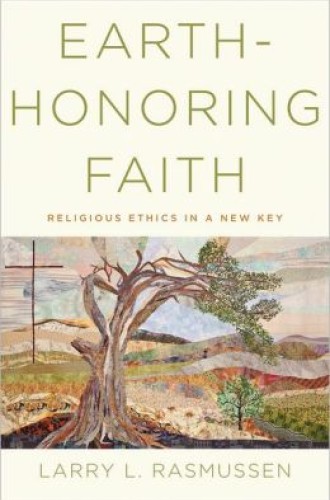Earth-Honoring Faith, by Larry L. Rasmussen
We live in a strange new world. Climate is rapidly changing, ecosystems are being destroyed, and species are disappearing at alarming rates. Given such a challenging outlook, what can be done to right humanity’s course? How can we change our ways so the planetary community can flourish?
Drawing insights from the ancient worldviews and moral traditions of the world’s religions, Larry Rasmussen argues in Earth-Honoring Faith that the fate of all life on Earth depends upon our living “in a new key.”
Rasmussen’s ethical vision is not new. His project is not a beginning but a rebeginning, a reimagining of timeworn religious traditions that can transform human thinking. Professor emeritus of social ethics at Union Theological Seminary in New York City, Rasmussen contends that there is an organic alliance between spirituality and ecological responsibility, and that religious traditions like mysticism, asceticism, prophetic practice and the cultivation of wisdom offer healing counterresponses to the pervasive alienation of our






